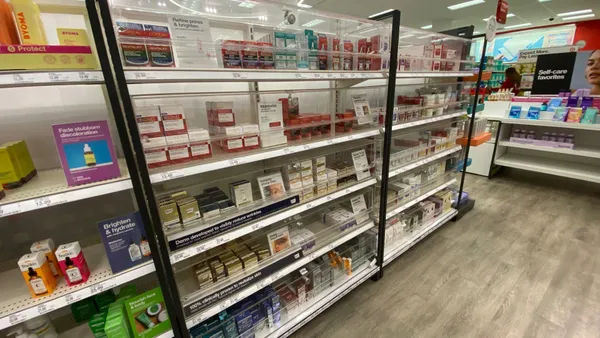Dive Brief:
- Consumer spending for Valentine's Day this year is expected to hit $18.2 billion, down from last year's record-high spending of $19.7 billion and marking only the second dip in V-Day spending since 2010, according to a National Retail Foundation survey.
- Average Valentine's spending this year is anticipated to be about $136.57, versus $146.84 in 2016. The 2017 mark is much more than the $119 per consumer spent in 2007, but this year's survey also found that the number of people planning to celebrate Valentine's Day has slid almost 10% in this 10-year period, from 63% in 2007 to 54% this year.
- Consumers plan to spend $4.3 billion on jewelry (given by 19% of shoppers), $3.8 billion on an evening out (37%), $2 billion on flowers (35%), $1.9 billion on clothing (19%), $1.7 billion on candy (50%), $1.4 billion on gift cards/gift certificates (16%) and $1 billion on greeting cards (47%).
Dive Insight:
Why spend any money at all when you can whip your beloved with the hide of a sacrificed animal?
Now that we have your attention, a quick note on this survey: It was conducted by Prosper Insights & Analytics the week of January 4-11, and asked 7,591 consumers about their Valentine’s Day plans. We note this only because no man knows anything about how much he will spend for Valentine's Day that far in advance of the actual day. So many things can happen in the span of a month or so that you need to apologize for via additional purchases or monetary considerations.
What else? Well, this year’s survey also found consumers plan to spend an average $85.21 on their significant other/spouse; $26.59 on other family members such as children or parents; $6.56 on children’s classmates/teachers; $6.51 on friends, $4.27 on co-workers, and $4.44 on pets. Somehow, we would have expected pets to rank a little higher on the list, and just how many people actually buy their co-workers Valentine's Day gifts? And how often does that turn out awkward?
We could mourn the decline in spending, but for a (non)holiday during which a good-sized chunk of the population chooses to sit/is left sitting on the spending sidelines, $18.2 billion is not chump change. It does sound, however, like Valentine's Day needs some sort of marketing boost. We're not sure what the answer is, but if retailers have been marketing for V-Day on autopilot in recent years, it will be interesting to see if lower spending this year inspires any of them to try something new.













